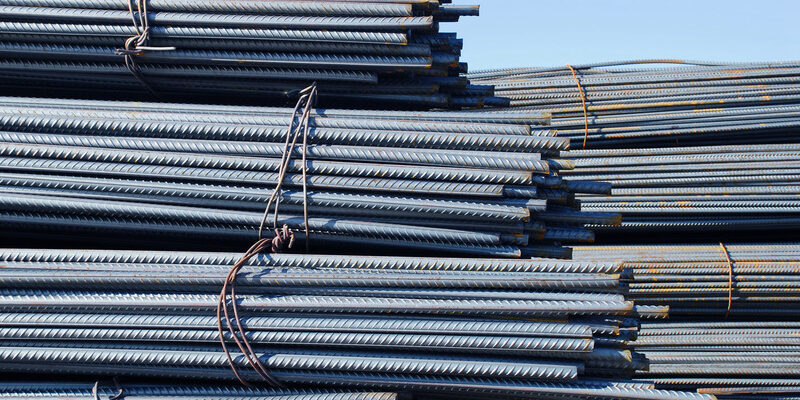TMT (Thermo-Mechanically Treated) bars are a crucial component in construction, providing strength and durability to reinforced concrete structures. Proper storage and handling of TMT bars on a construction site are essential to maintain their quality and ensure structural integrity. Here’s a detailed guide on best practices for storing and handling TMT bars.
Storage Guidelines for TMT Bars
1. Select a Proper Storage Area
-
Choose a dry and well-ventilated area for storing TMT bars. Avoid locations prone to water accumulation, as moisture can lead to rust formation.
-
The storage area should be level and firm to prevent bending or warping of bars.
2. Elevate the Bars Off the Ground
-
Place the bars on wooden sleepers, concrete blocks, or metal racks to prevent direct contact with the ground.
-
A minimum elevation of 150 mm is recommended to avoid exposure to moisture and dirt.
3. Protect Against Corrosion
-
Cover TMT bars with tarpaulin or plastic sheets to shield them from rain and excessive humidity.
-
Avoid wrapping bars in non-breathable covers that trap moisture and accelerate corrosion.
4. Categorize and Arrange Properly
-
Stack bars based on their diameter and length to make retrieval easier and prevent mix-ups.
-
Ensure heavier and longer bars are stored at the bottom, while lighter ones are kept on top to avoid structural damage.
5. Maintain Safe Distances
-
Keep the storage area away from chemicals, acids, or any materials that could cause corrosion.
-
Maintain a safe distance from moving construction equipment to prevent accidental damage.
Handling Guidelines for TMT Bars
1. Use Proper Lifting Equipment
-
For manual handling, workers should lift bars properly to avoid injuries or strain.
-
When using cranes, forklifts, or other mechanical equipment, secure the bars properly with slings or clamps to prevent slipping.
2. Avoid Dropping or Dragging
-
Dropping bars from a height can cause bending, which affects their structural performance.
-
Always lift and place the bars carefully instead of dragging them along rough surfaces, which may damage their ribbed surface.
3. Cut and Bend with the Right Tools
-
Use mechanized cutting and bending machines to maintain accuracy and prevent unnecessary stress on the bars.
-
Avoid manual bending methods that can create weak points in the bars.
4. Regular Inspection and Cleaning
-
Periodically check stored bars for signs of rust, bending, or damage.
-
If mild rust appears, clean it with a wire brush before using the bars in construction.
Conclusion
Proper storage and handling of TMT bars on a construction site play a significant role in maintaining their strength, durability, and effectiveness. Following these best practices helps prevent corrosion, bending, and unnecessary wastage, ensuring the quality of construction and the longevity of structures. Implement these measures to maximize the performance and safety of TMT bars in any project.
